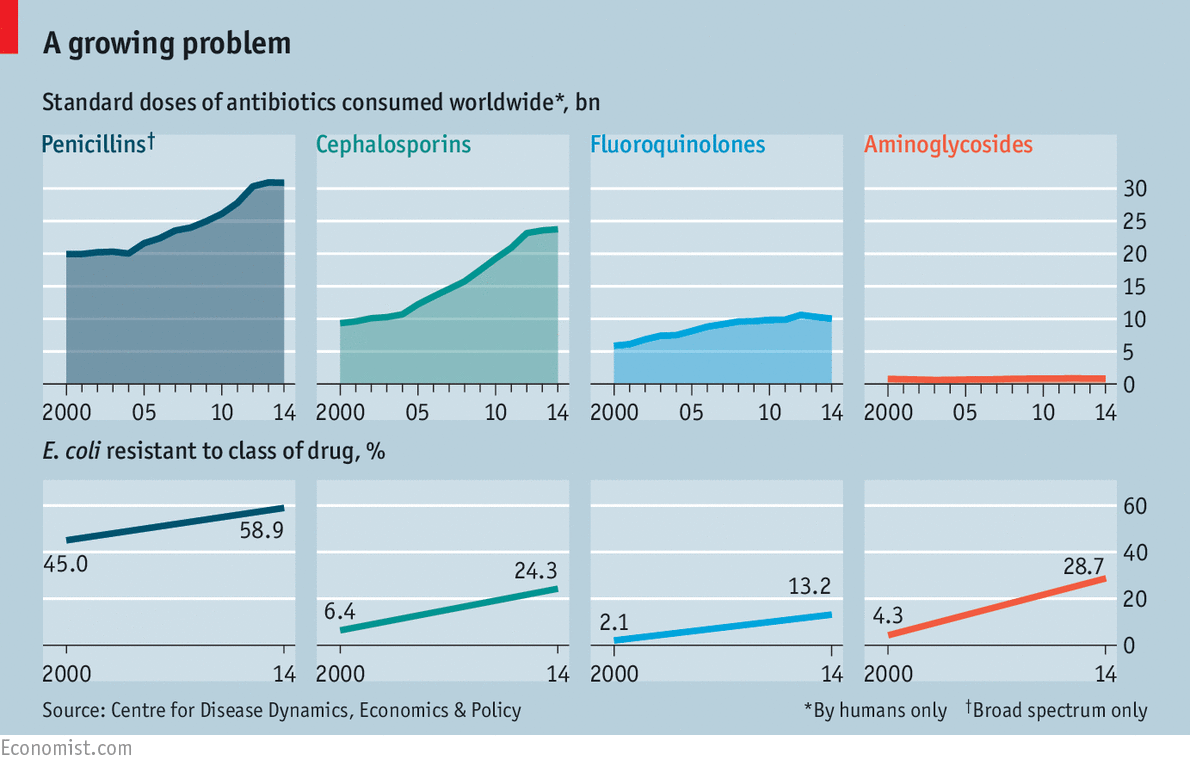The other global drugs problem

All around the world, drug-resistant infections are on the rise. They now kill more than 700,000 people a year. In 2014 nearly 60% of samples of Escherichia coli, a common gut bacterium, collected from patients in hospital were strains that could not be treated with penicillins. About 25% were resistant to one or both of two other commonly used sorts of antibiotics.
The main reason for this resistance is overuse of antibiotics by people, both on themselves and on their animals. Between 2000 and 2014, the number of standard doses of antibiotics used increased by 50%. By 2050 drug-resistant infections could cost between 1.1% and 3.8% of global GDP, according to a report published on September 19th by the World Bank.
Two days later, the United Nations held a meeting of heads of state to mull the matter over—only the fourth occasion that the General Assembly has debated a health problem. The assembly did not adopt any targets to curb the use of antibiotics, as some scientists have urged it to do. But its members did promise to draw up and pay for national plans to tackle the issue. There is no time to waste: on…Continue reading
Source: Economist




